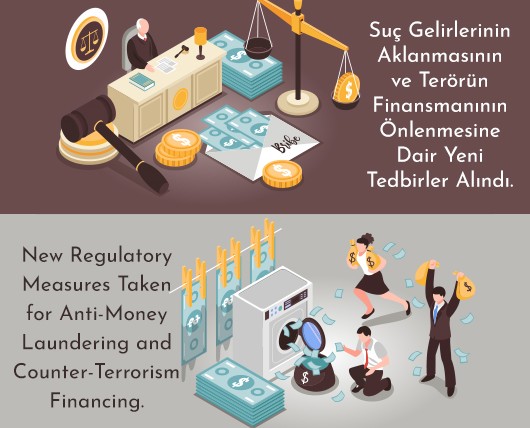“Aha” says the Moral Philosopher triumphantly, polishing his monocle ferociously with a large handkerchief. “You have contradicted yourself! If you say yes to the first case you should say yes to the second, for you have already revealed your acceptance of the principle that one person should be sacrificed for the many.”
Many people – even many philosophers – think that morality and ethics are the same thing. But they are not. Morality is primarily about making correct choices, while ethics is about proper reasoning.
Take the so called ‘trolley problem‘, a thought experiment about runaway trains invented by the late Philippa Foot and very popular with moral philosophers of a certain whimsical bent. You see that a runway train is hurtling down a track, and that it is going to hit a group of 5 people standing in its path and will certainly kill them all. However, you happen to be standing next to a switch that can divert the train down another track where only a single person is standing. What would you do?
Most people say they would pull the switch and kill 1 rather than 5. (Visit philosophyexperiments.comto read the full outline, try out your own intuitions against various iterations of the situation, and find out what other people decided.)
But if the terms of the situation are slightly changed, people tend to give quite a different answer. Suppose that there is no switch, but that you are instead standing on a bridge over the railway track next to a very fat man, and you are sure that if you pushed him onto the track his bulk (but not yours) would be sufficient to stop the train before it hit the group of people. What do you think now? Should you kill the fat man?
Most people who said ‘yes’ to diverting the train say ‘no’ to pushing the fat man. But if you do, many moral philosophers would say you have made a mistake. Not because you are wrong about whether or not to kill people to save others, but because you are being inconsistent about your killing decisions.
I find this complaint rather strange, and I think it reveals much about the legalistic character of contemporary moral philosophy. What this approach to moral philosophy is concerned with is the correct derivation and application of moral rules. (The linguistic derivation of “morality” from the Latin, mos – norms or rules – is somewhat suggestive here, although the distinction I want to make does not depend on it.)
Moral philosophy therefore has two concerns:
i) the content – ‘what are the moral laws?’ (whether the utilitarian commandment to maximise valuable consequences, or Kant’s categorical respect for dignity); and
ii) the application of those rules – ‘which moral law does this case fall under?’
It is supposed that the hard part of morality is coming up with the right rules, while their application will be more or less formulaic and can be objectively evaluated in terms of the formal virtues of consistency, transitivity, and menu independence (just such as can be found in economics textbooks under Rational Choice Theory). Hence, the moral philosopher in the trolley case does not criticise your choice of principle – the formula: sacrifice one for five – but does feel more than qualified to criticise your inconsistent application of it. You are free to be a utilitarian or a Kantian, but then you have to stick to that commitment.
Is this a realistic model of morality? Does it characterise how you think about moral problems, or think you should? Fortunately there is an alternative: Ethics.
Ethics comes from the Greek tradition that emphasises ethos (character), though it remained important right up until the enlightenment and is still popular today in our ordinary moral talk and thinking. It asks ‘What kind of person is good?’ This is personalised as ‘What kind of person should I be?’ It is particularised as ‘How should a good person behave in this case?’ Ethics emphasises the responsibility and capability of the individual (hence character) to come to her own conclusions through reasoning, to be the judge of which principles are relevant in a particular case and how they should be considered in combination. The ethicist does not think that moral laws interpret themselves and sees that view as deeply naive about the importance of moral reasoning, in the way that believing that all supreme court justices do is read the constitution and do what it says is naive.
The important thing about judges is that while they themselves – not some universal formula – are responsible for making their decisions, their reasoning has a public aspect. No judge, whether of the quality of an artwork, a gymnastics competition, or a murder trial, is allowed to simply announce their conclusion and leave it at that, as if it were only a personal opinion. Unlike opinions, which one may have about one’s favourite ice cream flavour or the morality of capital punishment in general, judgements must be justified by the characteristics of the case in hand and expressed in a way that seeks inter-subjective agreement from others with an interest in the matter. Judges must be able to show by explaining their reasoning that anyone else in their position should come to their conclusion, e.g. that this and this are the salient features of this case and should be understood and weighted in this way. They must be prepared to persuade others, and to modify their reasoning and conclusions in the light of relevant contrary evidence and arguments.
So, turning back to the trolley problem, the problem I see with the straightforward moral philosophy approach is that it fails to distinguish between reasoning and choices, and thus interprets any inconsistency of choice as evidence of inconsistency of reasoning. But from the ethical perspective people are seen not as attempting to apply the core set of moral principles they have already committed themselves to, but as reasoning more broadly about which principles are relevant and how much they should count in these different cases in order to come to judgements about what one should do. There is no point in trying to identify the formula the participant is using to decide what to do, because there isn’t one. And thus the moral philosopher’s charge of contradiction – the inconsistent application of a formula – is misguided (a case of petitio principii – arguing for a conclusion already assumed in the premise).
All this is not to say that these thought experiments aren’t interesting and useful, but we should be more concerned with evaluating – and challenging – the reasoning behind the participant’s conclusion, where the real ethical action is, rather than studying matrices of choices to detect patterns and ‘mistakes’. The latter approach does not take ethical agents seriously, and it seems to me that moral philosophy without ethical agents is like Hamlet without the prince of Denmark.







Etik ve Uyum Programı Nasıl Hazırlanır?
Kurumsal Etik ve Uyum Programı Geliştirme Gereğinin Ardındaki İtici Güçler
Sorumlu İş Modelinin Şirkete Yararları
Sorumlu İş Modeli
Rekabet Kurulu Para Cezalarında Yeni Dönem
Uluslararası Yaptırımlar, Rüşvet ve Yolsuzlukla Mücadelede Dost mu Düşman mı?
2024 Yolsuzluk Algı Endeksi Açıklandı!
Rekabet Kurulu Kararlarına Uyum – Karardan Sonrası Tufan mı?